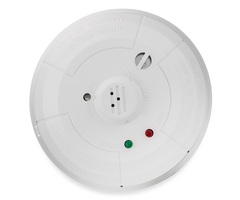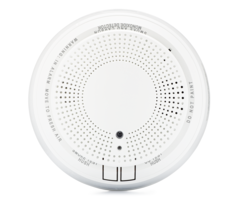How Often Should I Replace a Honeywell Carbon Monoxide Detector?
You should replace a Honeywell Carbon Monoxide Detector at least once every ten (10) years. Some models will need to be replaced after seven (7) years. You should refer to the manual for the device to determine its lifespan. Replace the unit ASAP once its end-of-life has been reached.

Carbon monoxide detectors work by detecting unusually high levels of carbon monoxide (CO) gas in the air. CO gas is extremely dangerous and extremely lethal to humans. But outbreaks are difficult to detect, as the gas is both odorless and tasteless. That is why it is important to have properly functioning carbon monoxide sensors installed. Unfortunately, carbon monoxide sensors are unable to work indefinitely, and they need to be replaced following their expiration date. This is true whether you have a biomimetic sensor, a metal oxide semiconductor sensor, or an electrochecmical sensor. For more information on how CO detectors work, please refer to this helpful FAQ.
As of 2009, all carbon monoxide detectors sold in the United States are required to be equipped with an end-of-life alert to let users know when these sensors must be replaced. This end-of-life notification is required for these devices to be compliant with Nationally Recognized Industry Standards. The actual alert itself will vary between different carbon monoxide sensor models. In any case, replacing the batteries will not fix the problem. The entire module needs to be replaced, as the unit can no longer reliably detect CO gas. To determine if your device has reached its end-of-life, it is advised that you check its user manual. Most current CO detector models have a 10-year lifespan, but there are some with a shorter 7-year lifespan.
Many carbon monoxide sensors used with alarm systems can be programmed to trigger an end-of-life trouble condition when the unit has reach its expiration date and needs to be replaced. This may require programming an additional zone to the system for end-of-life detection. For example, the Honeywell 5800COMBO uses Serial Number 2, Loop 2 for end-of-life detection. When the product reaches its end-of-life, a trouble condition will be displayed on the panel to provide indication that the sensor must be replaced. In any case, you should refer to the device's instruction manual to see if such a feature is possible.
Most wireless Honeywell Systems will support both the Honeywell 5800CO and the Honeywell 5800COMBO. And if you have a Honeywell Lyric, then you might also consider the Honeywell SiXCOMBO. If you ever need help choosing a new carbon monoxide sensor for your system, then you can always email us at support@alarmgrid.com to explore your options. Remember that our support hours run from 9am to 8pm ET M-F if you decide to email us for help.
Did you find this answer useful?
We offer alarm monitoring as low as $10 / month
Click Here to Learn MoreRelated Products




Related Categories
- Answered
